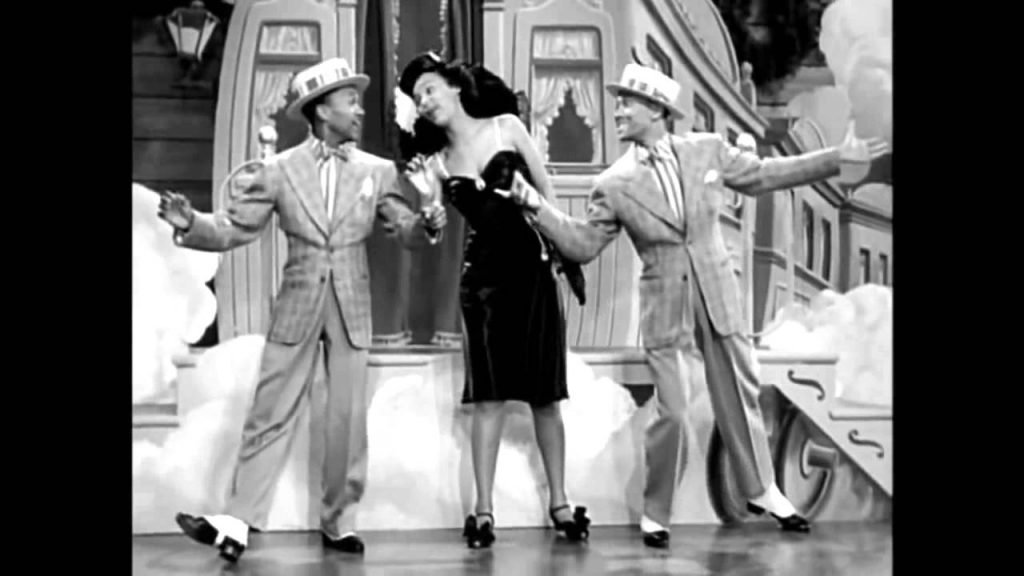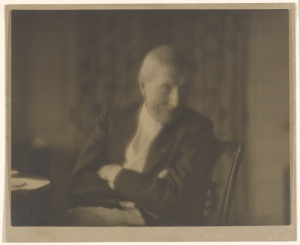It’s the evening of March 30, 1955. It’s the night of the 27th Academy Awards in Hollywood California. The celebrities are arriving in their limousines, and emerging from one of these, herded with blinding flashing lights, is a star. This star, from Cleveland, Ohio, is living out her dream. She has been nominated for the Best Actress award. Tonight, she’s making history. This woman is Dorothy Dandridge, and just for her being nominated, she is making history. Dorothy is the first African-American woman ever to be nominated for this award. And this nomination changed the way Americans thought, at least for that night. That Oscar would look so befitting in her hands. Her photo holding that Oscar from that night would be on every cover of every magazine in the country by the morning. Unfortunately, we never got to see that photo, because Dorothy did not win that night.

Dorothy Dandridge, born on November 9, 1922, first began her start in show business with her sister and another young woman in a musical trio. Once they gathered enough attention, they began performing at the Cotton Club during the 1930s.1 The famed Cotton Club was the dance club based in Harlem, New York where the most popular black singers and dancers performed, such as Cab Calloway and Duke Ellington, and it was where Dorothy Dandridge met her future husband. Here, Dorothy and her trio became so popular that they decided to take their show on tour to England. She finally married her husband, Harold Nicholas, of the Nicholas Brothers. The Nicholas Brothers were a duet who sang and tap danced together. Dorothy and Harold married on September 6, 1942. Dorothy’s marriage to Harold, however, was an unhealthy one, because her trio was receiving more fame than the Harold Brothers, causing tensions between them, and because Harold was also having affairs. But shortly after her marriage, Dorothy became pregnant and gave birth on September 2, 1943, and her baby girl was born brain damaged, due to a lack of oxygen. For the best for the child, Dorothy put her daughter in a private care agency. And after a number of years struggling with Harold and his infidelity, she finally divorced him in 1949.2
Determined to get back on her feet following the divorce, Dorothy decided to begin a solo career as a singer. It is as a singer that she gathered many fans and attention. But Dorothy always had a strong interest in acting. In 1948, when things in her marriage were rocky, she enrolled in The Actor’s Lab, which was the prestigious training school for actors in Los Angeles, California. During the 1940s, The Actor’s Lab trained many future Hollywood stars, including Marilyn Monroe. But during this period in cinematic history, it was hard for a black person to get leading roles on the big screen, especially roles that would change how black people were seen in society in general. In spite of her training at The Actor’s Lab, Dorothy would not get the opportunity to play black characters with strong, complex roles.3
As a black woman at this time in American history, if one wanted to act, one would not be given intelligent or self-respecting roles. The roles black women were given were highly stereotypical, but if acting was ones dream, as it was for Dorothy, she would take those stock roles anyway. After leaving The Actor’s Lab, Dorothy became one of those women who was offered those stock, degrading roles. Her first roles were those that had always been derogatory for black women, such as playing the role of a mistress.4 Such was the case in her films Tamango and Island in the Sun. Those roles were certainly easy for a black woman to portray. And Dorothy would receive roles like this until, finally, she landed a role alongside Harry Belafonte. Dorothy became the lead actress in the 1953 film Bright Road, in which she portrays a school teacher helping the principal, Harry Belafonte, tame their problem students. Her role in the film became a success, and it put Dorothy on the map, and brought her acclaim as an actress. But Dorothy wanted a bigger role. She sought out the lead role as Carmen in the 1954 film Carmen Jones. It was hard for black women to receive self-respecting roles in films, but ironically, in order to get such roles, one must first put on the act of not being self-respecting.5

At first, Dorothy was declined the role of Carmen Jones, and it was only after walking into the audition appearing promiscuous that she was given the role. Carmen Jones is a Broadway musical, but it was turned into a musical film starring an all-black cast, with the likes of Harry Belafonte and Pearl Bailey, and directed by Otto Preminger. Known for bringing any character she portrayed to life with her beauty, charisma, and flirtatious style, the role of Carmen Jones solidified Dorothy’s nomination. Shortly, after getting the role, she was put on the cover of Life Magazine in the same attire she auditioned in. Here Dorothy made history. Dorothy became the first African-American woman to grace the cover of Life. This role also got Dorothy Dandridge an Oscar nomination, becoming the first African-American woman nominated for the Best Actress Award. In 1955, it was hard for a black woman, or black man, to get the respect they deserved from the elite Academy of Motion Picture Arts and Sciences, much less be nominated for one of the most prestigious awards any actor can receive. This nomination was important not only for Dorothy, but for the millions of black men and boys, women and girls, who had the opportunity of watching history unfold, and being given a sense of hope and belief in themselves that they may not have had before those awards began.6
That night was important for America, for the black community, and for Dorothy, even though she did not win. She held her own going against some of the most iconic figures in film that night. The other nominees for the award were Judy Garland, Audrey Hepburn, Jane Wyman, and Grace Kelly. Grace Kelly was the winner of the award for her performance in The Country Girl.7

In Hollywood in 1955, Dorothy Dandridge was a double threat: she was a woman and she was black. Because of this, many opportunities passed her by. She was quoted as saying, “If I were Betty Grable, I could capture the world.” Betty Grable was an American singer, dancer, and actress prominent throughout the 1930s and 1940s. This much was true. Dorothy had much to offer, and it seems absurd today that such a minuscule thing such as race could keep someone from practicing their dream, but this is just what kept Dorothy and others’ dreams undermined. Unlike many, Dorothy Dandridge tackled this arbitrary system of discrimination head on, and she became a star. But she was not allowed to shine as brightly as many of her colleagues.8


After her nomination, Dorothy signed a contract with Twentieth Century Fox, entitling her to three more films. She was established as one of the biggest stars of the time. Unfortunately, Dorothy’s last role was in Preminger’s musical Porgy and Bess. On September 8, 1965 a star had truly fallen. Dorothy’s deceased body was found in her apartment. Decades later she would be reincarnated by Halle Berry in the film Introducing Dorothy Dandridge.9

Plagued by the segregation, sexism, and racism of the times, Dorothy Dandridge could not handle it and succumbed to demise. Hollywood throughout the forties and to the sixties reflected America and its racial tensions. Given the racial inequities of the era, Hollywood was not ready to have many leading roles for black women, and this showed through Dorothy’s career. Dorothy Dandridge inspired many, especially after her death. She broke many barriers for aspiring young black actors internationally. She had a dream, but because of her pigmentation, she was treated differently. Despite these odds, Dorothy was a still a formidable and respected actress. Dorothy was finally noticed as the prolific star she was, by being given an honorary star on the walk of fame on January 18, 1983, in Los Angeles, California.10
- African American Eras: Segregation to Civil Rights Times, 2011, s.v. “Dandridge, Dorothy” (1922–1965). ↵
- Rogers Patrick & Lyndon Stambler, “Overdue notice,” People 48, no. 4 (1997): 89. ↵
- Marguerite H. Rippy, “Exhuming Dorothy Dandridge: the black sex goddess and classic Hollywood cinema,” CineAction, no. 44 (1997): 21. ↵
- Louie Robinson, “The Private World of Dorothy Dandridge,” Ebony 17, no. 8 (1962): 116. ↵
- Cynthia Gorney, “The Fragile Flame of Dorothy Dandridge,” The Washington Post, February 09, 1988. ↵
- Walter Leavy, “The mystery and real-life tragedy of Dorothy Dandridge,” Ebony 49, no. 2 (December 1993): 36. ↵
- Robert K. Lightning, “Dorothy Dandridge: ruminations on black stardom,” CineAction, no. 44 (1997): 31. ↵
- Encyclopaedia Britannica, May 2017, s.v. “Dorothy Dandridge.” ↵
- Erin Anderson, “Dorothy Dandridge: Singer & Actress,” Booklist (2011), 71. ↵
- Ed Guerrero, “Dorothy Dandridge: A Biography,” Cineaste, Vol. 23 Issue 4 (1998): 60. ↵



85 comments
Cameron Lopez
I know the actress Dorothy Dandridge, I do believe that she was way ahead of her time and for that she paid the consequences. She deserved better than that. Despite all the racism, she made a great impact in the community and able to set the path for the rest of the black actresses. Although she did get an award, she was able to inspire many others and also gain the respect of many.
Engelbert Madrid
The reason I was very interested to read this article was because it is important to remember people who were role models and important figures for other people’s culture. Dorothy Dandridge inspired many African American women to step up and to pursue their dreams, even if it’s difficult to accomplish it due to society’s standards. Dandridge deserves a huge recognition for being one of the first African American women to be successful although she did not receive the award she wanted.
Thomas Fraire
I never knew about the performer Dorothy Dandridge. It is grievous she was path comparatively radical and for that, she needed to pay dearly. She merited significantly better. In spite of all the prejudice, she could have an enormous effect on the network and ready to set the way for whatever is left of the dark performers. She might not have gotten her honor, be that as it may, she could move numerous others and furthermore gain the regard of many.
Bictor Martinez
I never heard of the actress Dorothy Dandridge. It is unfortunate she was way ahead of her time and for that she had to pay the consequences. She deserved a lot better. Despite all the racism, she was able to make a huge impact in the community and able to set the path for the rest of the black actresses. She may not have gotten her award however, she was able to inspire many others and also gain the respect of many.
Lorenzo Rivera
It is incredible how women in general are not as notarized as men are, especially in the Hollywood Industry. Considering the “me to movement” it is astounding to compare the past Hollywood, the one where Dorothy was not given her recognition she deserved and seeing how as a society we are all recognizing and acknowledging what women have to specifically have to go through. Still hearing what Dorothy went through is magnificent.
Madeline Torres
This article proved to me just how hard it was to become ‘someone’ in the movie industry back then for women of color. It’s amazing how her drive and strength brought her to fame and lead her to doing what she loves. Old Hollywood was in fact extremely unfair and it’s heartbreaking to read how hard it was for people of color to do what they loved. Although, Dorothy fought for her passion and she deserves every bit of a great life of a celebrity. This article told such a great story and I loved reading about the detail of old Hollywood.
Mariana Valadez
I really didn’t know about Dorothy Dandridge until now. I love reading about people who have inspired others and strived to make this world peaceful. It is upsetting she did not get the award, but great that she was nominated for it. It is sad to see what African American actresses went through during this time. This article was very inspiring and well put together
Lynsey Mott
While I am not a fan of black and white movies, other than ‘Its a Wonderful Life’ and ‘A Christmas Carol’. So reading stories like this, of people’s lives, especially Dorothy Dandridge is really interesting to me. Because she was so inspirational to a lot of people, and even though she didn’t win her award, a lot of people still admire her. She still continued to inspire a lot of those who didn’t think they could do what she did, and realized that they could, and tried for it.
Kailan Pena
This was such a great article on someone that deserves more respect and appraisal for what she accomplished. I love hearing such stories of inspiration and overcoming adversity, it’s wonderful. I’m sad Dorothy didn’t get the award she deserved but it’s great she was nominated. Surprisingly, even though I love Porgy and Bess, I had no idea she was in it and that just makes me like her more. Great job on this article!
Esperanza Mauricio
I have seen many Old Hollywood movies and the only black actress that I know of that won an Oscar during this time was for a supporting role in Gone With the Wind, Hattie McDaniel in 1940. Marking her the first African American woman to win an Oscar. I think it is amazing that Hattie McDaniel was able to set this precedent. This was an amazing article that perfectly weaved together the struggles of black actresses during this time. Hattie McDaniel’s winning role was a Manny role and was a typical role for black women. Having Dorothy in a leading role already inspired many youths and allowed for other African American actresses to aspire for roles that were more than a stereotype.